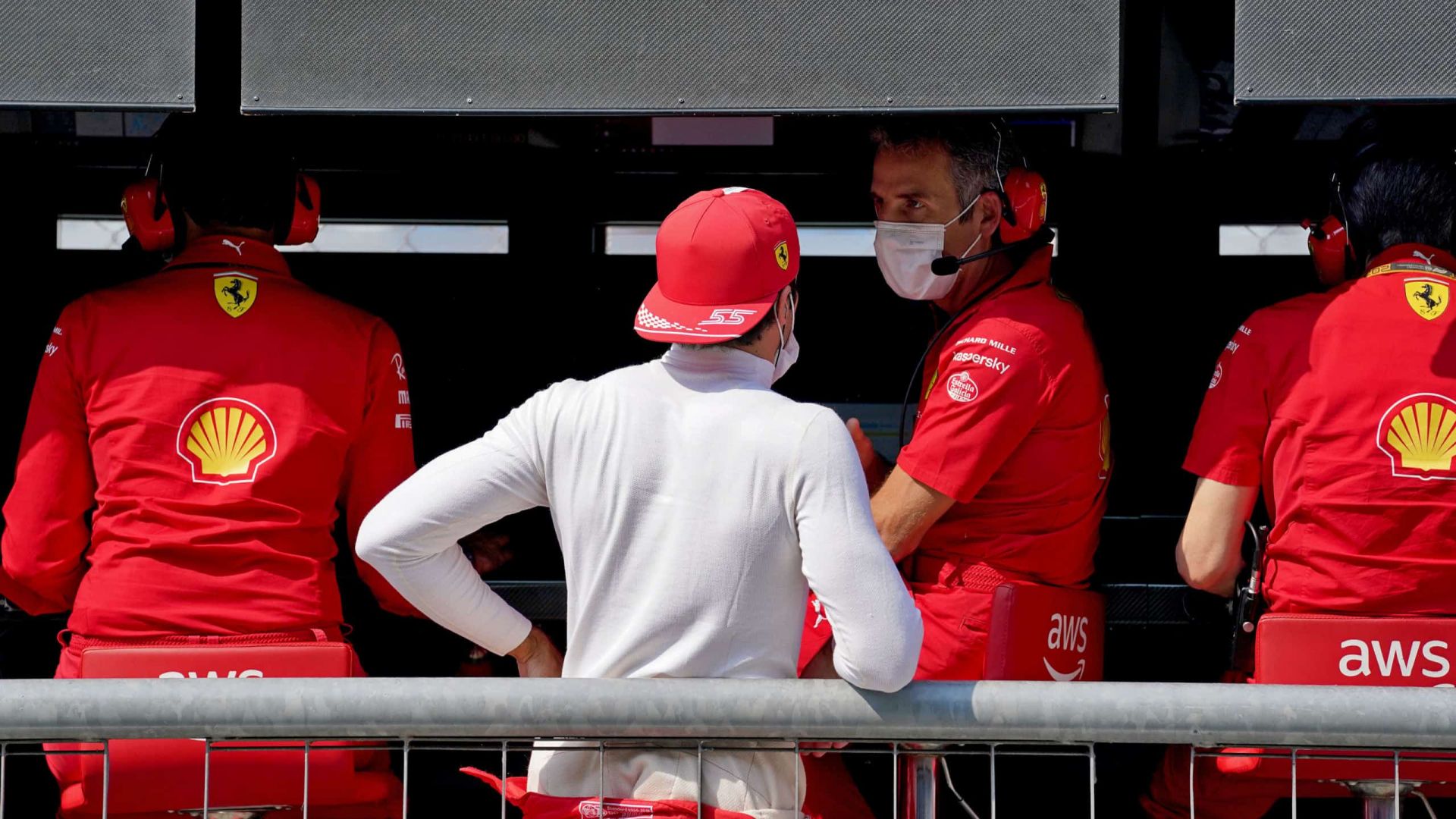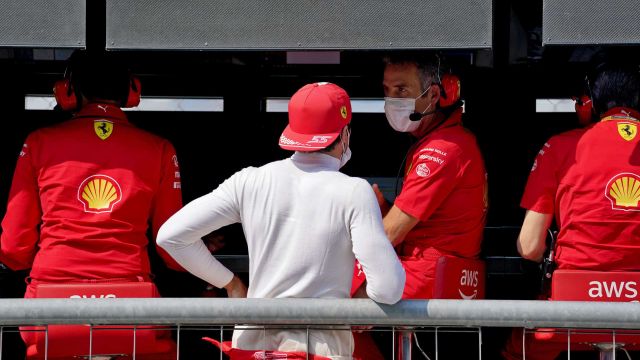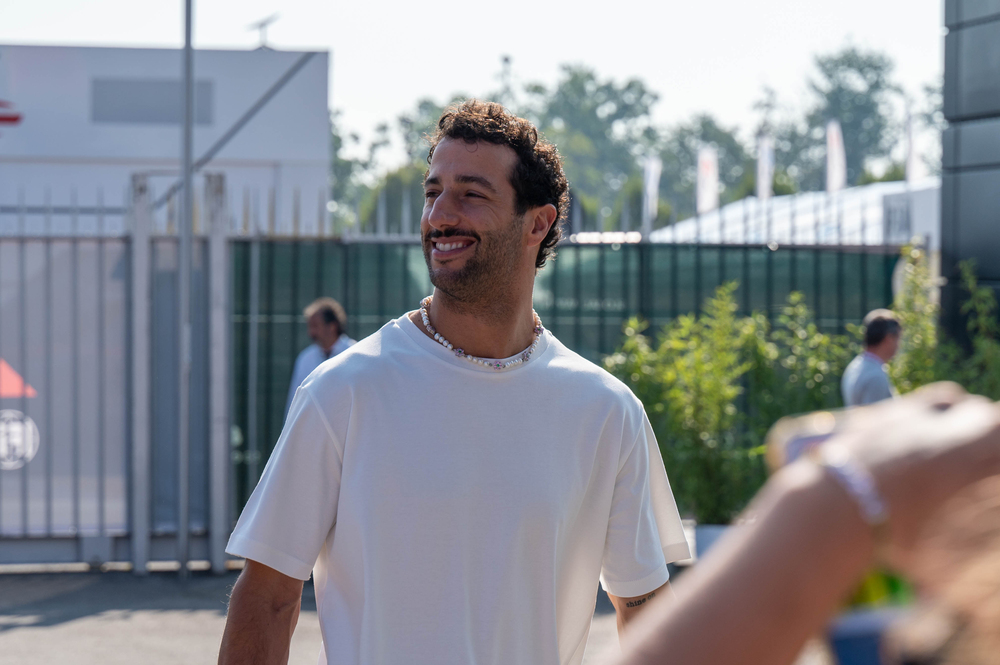What Goes Into F1 Strategy?


Formula 1 strategy is a complex decision-making process that involves analyzing a wide range of data, variables, and scenarios to determine the optimal approach for each race. Key elements that go into F1 strategy include tire management, pit stop timing, fuel consumption, weather conditions, track characteristics, and competitor performance.
Strategists use advanced computer simulations, machine learning algorithms, and real-time data analysis to assess the potential outcomes of different strategic choices. They also rely on the expertise of engineers, drivers, and other team members to make informed decisions that can adapt to changing circumstances during the race.
Effective F1 strategy requires a combination of technical knowledge, analytical skills, and the ability to make quick, decisive actions in high-pressure situations.
What is an F1 Strategist?
An F1 strategist is a highly skilled professional who plays a crucial role in maximizing a team’s performance and securing the best possible results on the track. They are responsible for analyzing vast amounts of data, developing and refining race strategies, and making critical decisions in real-time during a Grand Prix weekend.
The primary responsibilities of an F1 strategist include:
- Data analysis: Strategists use advanced software tools and mathematical models to process and interpret the enormous volume of data generated by the cars, the track, and the team’s simulations. This data includes tire performance and degradation, fuel consumption, lap times, weather conditions, and competitor behavior.
- Strategy development: Based on their data analysis, strategists create detailed race plans that outline the optimal tire usage, pit stop windows, and tactical approaches for each driver. They consider a wide range of variables, such as the circuit layout, expected weather conditions, and the strengths and weaknesses of their own car and those of their competitors.
- Real-time decision-making: During qualifying and the race, strategists must make split-second decisions in response to changing circumstances on the track. This may involve adapting to unexpected weather changes, reacting to Safety Car periods, or adjusting strategies to counter the moves of rival teams.
- Communication and collaboration: Strategists work closely with other key members of the team, including race engineers, performance engineers, and the drivers themselves. They must be able to communicate complex information clearly and concisely, and collaborate effectively to ensure that everyone is working towards the same goals.
To excel in this role, F1 strategists must possess a unique combination of skills and attributes, including:
- Exceptional analytical and problem-solving skills
- Deep understanding of Formula 1 regulations, technology, and race tactics
- Ability to work effectively under high-pressure, time-sensitive conditions
- Strong communication and leadership skills
- Flexibility and adaptability to changing circumstances
F1 strategists often have backgrounds in fields such as engineering, mathematics, computer science, or physics. They may have previous experience in other areas of motorsport or in industries where data analysis and decision-making under pressure are critical, such as finance or logistics.
How do you sum up a ‘strategy’ in F1?
Most people associate an F1 strategy with the call to pit and the decision of which tyres to fit, and that is indeed a crucial aspect of the strategy. During the race itself, the primary aim of the strategy department is to optimize the car’s performance against the competition, ensuring that the driver finishes the race in the highest position possible. However, to truly understand the wider scope of the strategy department’s work, it’s essential to take a step back and consider the bigger picture.
One step back from the race, the strategy team is focused on how the team wants to approach Qualifying. This involves analyzing data from practice sessions, assessing the car’s performance on different tire compounds, and determining the optimal setup for the car to achieve the best possible starting position for the race.
But the strategy department’s work extends even further back. They must consider the team’s overall approach to the entire race weekend, including how to allocate resources and tires during practice sessions. This involves striking a balance between gathering essential data, testing new components, and preserving tires for Qualifying and the race.
From an even broader perspective, the strategy team must take into account the entire season. They analyze which tracks the team is likely to perform better or worse at, based on factors such as the car’s strengths and weaknesses, historical data, and simulations. This information helps them develop a strategic approach for each race, considering factors such as tire allocation, engine management, and potential points-scoring opportunities.
Furthermore, the strategy department must also consider the team’s position in the championship standings and adapt their approach accordingly. For example, a team leading the championship may opt for a more conservative strategy to maintain their lead, while a team trying to catch up may take more risks to maximize their chances of scoring points.
How does the strategy team prepare for a race weekend?
The strategy team’s preparations for a race weekend begin well in advance, often working several races ahead to ensure that baseline preparations are in place. They utilize every available piece of data to build a comprehensive understanding of all possible scenarios and their implications for strategy. As each race weekend concludes, the team’s systems are updated to reanalyze and refine their expectations for upcoming events. Every race weekend provides a wealth of information about the team’s strengths, weaknesses, and areas for improvement.
In the lead-up to a race weekend, the strategy team has access to a wide array of data and information. They analyze weather patterns, drawing on historical data and forecasts to anticipate how conditions may impact the race. The team also closely examines the learnings from their previous visits to the circuit, including tire performance data and any relevant insights gained since then.
Another key aspect of the strategy team’s preparations involves studying the performance patterns of their own car and those of their competitors. They analyze how different cars perform in various scenarios, such as qualifying, race starts, and different fuel loads. The team also considers factors like track evolution, which refers to how the racing surface changes over the course of a weekend due to factors such as rubber accumulation, temperature fluctuations, and weather conditions.
By combining all of this information, the strategy team aims to develop a clear picture of their expected performance, the likely pace of their rivals, and how they anticipate the tires will behave during the race weekend. This understanding forms the foundation of their strategic planning, allowing them to devise optimal approaches for qualifying, race starts, pit stops, and tire management.
The strategy team collaborates closely with other departments within the team, such as engineering, aerodynamics, and vehicle dynamics, to ensure that their strategic plans align with the car’s technical capabilities and any planned upgrades or changes.
What do the strategy team focus on during Practice and Qualifying sessions?
During Friday’s practice sessions, one of the primary focuses for the strategy team is understanding tire performance and degradation. They collect and analyze data not only from their own cars but also from the entire grid, aiming to build a comprehensive understanding based on multiple samples. While it can be challenging to gather all the necessary information from the one-hour practice sessions, the strategy team strives to extract as much insight as possible.
The team relies on various inputs, including lap times, GPS data, tire data, and a wide range of other information for both their own cars and those of their competitors. The strategists absorb and process this information to make informed decisions. By the end of the second practice session (FP2), the goal is to have a clear understanding of the required setup decisions and a plan for qualifying. However, the most crucial decision is determining which tire compound they want to start the race on, which must be decided before the third practice session (FP3).
On Saturday, the strategy team’s focus shifts to building upon the existing data set and prioritizing low-fuel runs to finalize the plans for qualifying. This includes deciding which tire compounds to use in each qualifying session, determining the run plans, setting the timing for garage exits, and considering factors such as whether to utilize a slipstream (tow) from another car. The team formulates a plan that includes fuel loads, lap counts, and other fundamental aspects, and then continuously refines the plan throughout qualifying based on new information, such as track evolution, competitor performance, tire performance differences (offsets), and any emerging issues. They also need to be prepared to react to factors outside of their control, like changing weather conditions or red flag interruptions.
It’s important to note that the team has a limited number of tire sets available for use during the weekend, making the run plans and tire allocation for each run a critical strategic decision. The choices made in the first qualifying session (Q1) have a direct impact on the following two sessions (Q2 and Q3). Therefore, the strategy team must carefully balance the use of their resources to ensure they can start the race as high up the grid as possible.
In addition to tire management, the strategy team also closely monitors track conditions, weather forecasts, and the performance of their rivals throughout the practice and qualifying sessions. They use this information to continuously update and optimize their strategic plans, ensuring that the team is well-prepared for any scenario that may unfold during the race.
What elements are being monitored during the race?
During the race, the strategy team is bombarded with thousands of data points every second, originating from their own cars and those of their competitors. Before the race begins, the team will have established a solid baseline understanding of various factors, such as tire degradation curves, the time lost during a pit stop, weather predictions, and the ease of overtaking on the particular track. However, as fresh data pours in during the race, the strategy tools are continuously re-tuned and refined, enabling the team to make more accurate predictions about how the race will unfold.
The strategy team is constantly reviewing this incoming information, looking for any indicators that might suggest a need to change their planned strategy or adapt to new circumstances. To facilitate clear and concise communication, the team uses dedicated intercom channels with strict protocols. These channels allow the strategists to raise and debate emerging situations, discuss what the race planner forecast is suggesting, and consider potential future scenarios and how the team could react to them.
In addition to the strategy team, other key members of the team, such as the Team Principal (e.g., Toto Wolff in the case of Mercedes) and the race engineering team, also contribute to strategic discussions throughout the race. These individuals draw upon their extensive knowledge and expertise to provide valuable insights and perspective on the unfolding events.
The strategy team will have developed contingency plans for various scenarios before the race weekend even begins. These plans are constantly monitored and adapted as the race progresses. Pre-planning is essential to enable the team to react quickly and calmly to unexpected events, such as the deployment of a Safety Car. When these situations arise, the focus shifts to executing the pre-established plan as efficiently as possible.
The strategy team also closely monitors the performance and strategies of their rivals, looking for any opportunities to gain an advantage or counter their moves. They analyze factors such as the tire compounds being used by other teams, their lap times, and any indications of potential pit stops or strategic changes.
Lastly, the strategy team must be prepared to adapt to changing weather conditions during the race. If rain is expected, for example, they will have a plan in place for when to switch to intermediate or wet tires, taking into account factors such as the intensity of the rainfall, the track conditions, and the actions of other teams.
Do some decisions have to be made last minute?
Despite the extensive planning and preparation that goes into Formula 1 strategy, some decisions still need to be made in the heat of the moment. Weather, in particular, can be highly unpredictable, forcing the strategy team to make some of the most challenging calls they face. The intensity of a rain shower, its location on the track, and its impact on available tire grip can make choosing the right tire compound in wet conditions an agonizing decision.
Even with the sophisticated systems and tools at their disposal, some developments during a race are so clear-cut that decisions to deviate from the planned strategy are made in an instant. A prime example of this occurred during the 2020 Italian Grand Prix at Monza, where the decision to pit Lewis Hamilton was made swiftly. The strategy team observed from his sector time, after his rivals had pitted, that his pace wasn’t going to be sufficient, and the planned strategy would no longer be effective.
Throughout a race weekend, the strategy team makes thousands of decisions, many of which are not apparent to those outside the team. Each session, particularly qualifying and the race, involves countless moving parts and hundreds of different strategy options to analyze before selecting the one that works best for both cars.
The role of the strategy team extends beyond just making decisions during the race. They also play a crucial role in the development and testing of new components and upgrades. By analyzing data from practice sessions and simulations, the strategy team can provide valuable insights into how new parts or setup changes might impact the car’s performance and tire management, helping to guide the team’s development direction.
Additionally, the strategy team works closely with the drivers to help them understand and execute the chosen strategy. This involves briefing the drivers on the planned tire usage, pit stop windows, and any potential scenarios that may arise during the race. The drivers’ feedback and insights are also valuable to the strategy team, as they can provide a unique perspective on track conditions, tire behavior, and the effectiveness of different strategic approaches.
Formula 1 strategy is often likened to a never-ending game of multi-dimensional chess, with teams constantly trying to outmaneuver and outsmart their opponents. It’s a challenge that strategy teams throughout the paddock embrace and relish, as it pushes them to continuously innovate, adapt, and strive for excellence in pursuit of victory.
From F1 news to tech, history to opinions, F1 Chronicle has a free Substack. To deliver the stories you want straight to your inbox, click here.
New to Formula 1? Check out our Glossary of F1 Terms, and our Beginners Guide to Formula 1 to fast-track your F1 knowledge.
Some of the information in this article was provided via Mercedes-AMG Petronas F1 Team press release.





